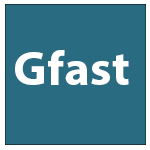 There are now 42 certified-interoperable 106 MHz Gfast solutions, according to the Broadband Forum, which sees the successful deployment of some initial solutions driving the implementation of others.
There are now 42 certified-interoperable 106 MHz Gfast solutions, according to the Broadband Forum, which sees the successful deployment of some initial solutions driving the implementation of others.
The Broadband Forum noted that there is a notable increase in the scope and scale of Gfast deployments due to operators using Gfast to complement their fiber build-outs because they are finding the technology well-suited for both Fiber-to-the-Curb (FTTC) and Fiber-to-the-Building (FTTB).
For example, BT Openreach is committed to deploy Fiber-to-the-Premises (FTTP) to 3 million UK premises and pass around 10 million homes with Gfast by 2021, which the Broadband Forum says will enable the operator to offer 330Mbps services over its current FTTC network by upgrading the equipment in the cabinet. Other operators leveraging Gfast include Orange, SandyNet, Frontier, Post Luxembourg, Swisscom, Skywire Networks, and Australia’s National Broadband Network (NBN).
106 MHz Gfast
Gfast will continue to be crucial, especially for brownfield locations, where universal fiber deployment can be problematic and costly as operators continue to upgrade their infrastructure to meet rising consumer demand, according to the Broadband Forum.
“The adoption of Gfast has come a long way in a short space of time, and the next few months will see further significant advancements, particularly in standardization and certification as operators start to deploy 212 MHz Gfast technology,” said Geoff Burke, Broadband Forum chief marketing officer, in a prepared statement. “The deployments referred to in the Market Update show that operators see the technology as a powerful and compelling complement to fiber and a lucrative way to bring high-speed broadband networks to areas where it is not cost-effective to deploy Fiber-to-the-Home. The fact that this coincides with the continued growth of our certification program is no coincidence, with the certifications ensuring interoperability that inspires industry confidence and leads to mass deployment.”

